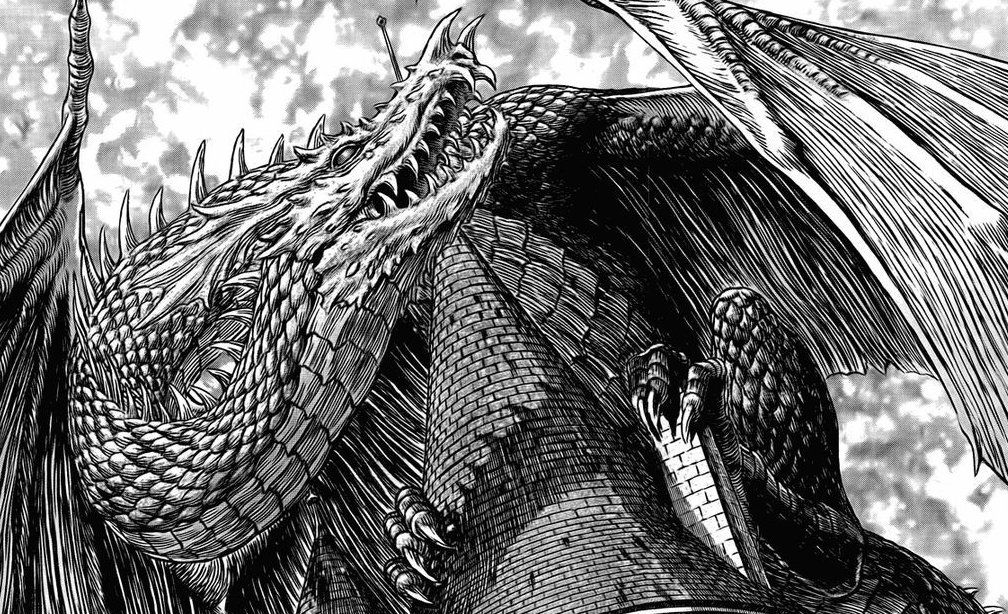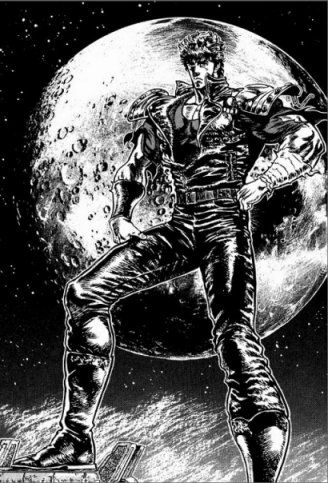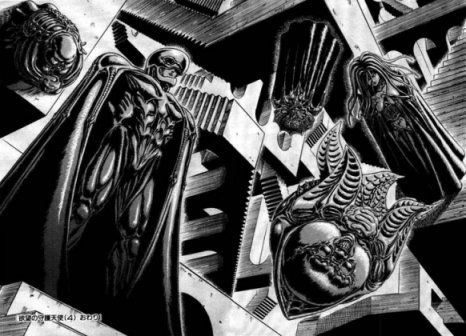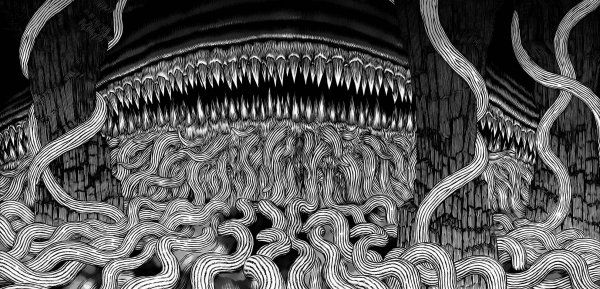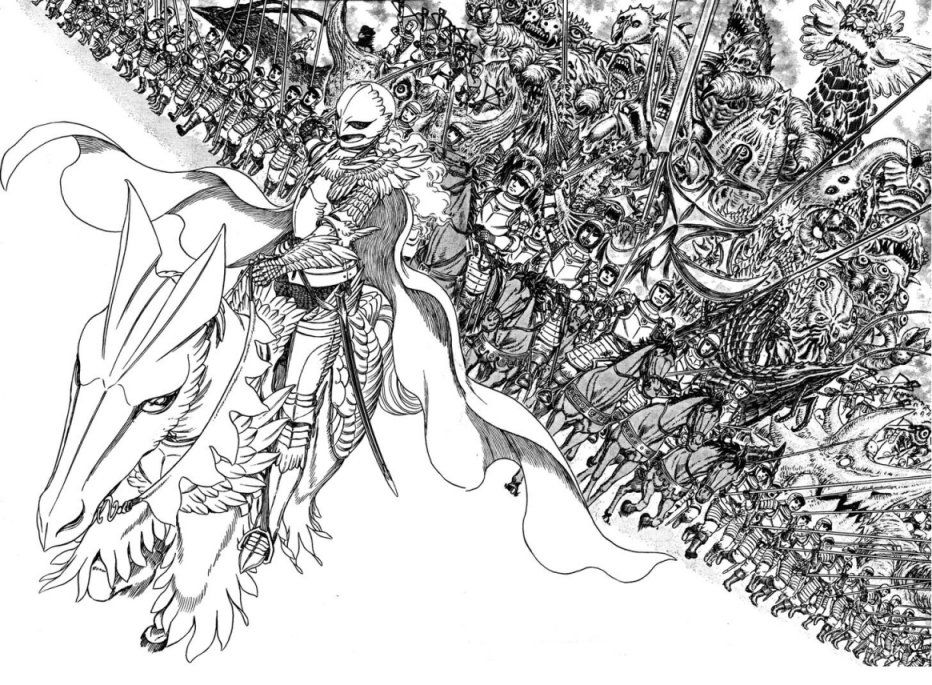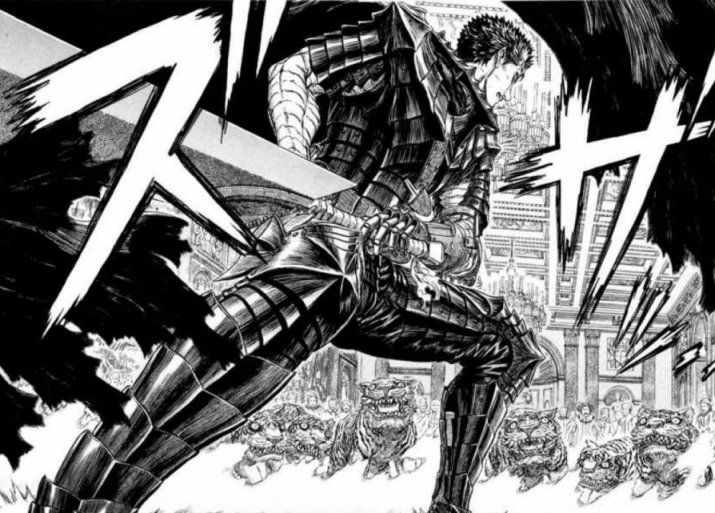I may or may not cover Kentaro Miura's Berserk in depth at a later time, but I thought this might be a bit more interesting and informative than a general series summary. Berserk is one of the best comics I've ever read, hands down. It's also one of the more popular English-language manga among non-manga readers. The sword-and-sorcery themes make it fairly accessible to an audience already familiar with western fantasy, but it's also an awesome series on its own.
It is unlike other manga, but sometimes it is. I'm going to take a look at what makes it unique among manga, and other comics, for that matter.
One of the first things I should point out is that it started in 1990. At first glance, one would think the character designs and general violent nature are based more on Western fantasy than on manga. Manga overall tends to feature a kind of fantasy violence, and series where characters are brutally and graphically killed are rare (but do exist, especially among men's manga). But Berserk, and many other '80s manga series, were inspired heavily by Fist of the North Star, by Buronson and Tetsuo Hara. The musclebound character designs in particular are not in vogue among manga artists today, but when Berserk came out, Guts and his opponents were big buff guys because Kenshiro was a muscular hero that fought enormous musclebound foes. Guts loner nature, his way with words in the early books, and the indescribable evil of the Berserk villains are all likely inspired by Fist of the North Star more than Western fantasy stories.
Another obvious influence from early volumes of Berserk is Hellraiser. The behelits are similar devices to Lemarchand's Box/Lament Configuration, and in the early volumes, the nether realm that the behelits unlock is the Escher-like landscapes one finds in the Hellraiser movies. Especially obvious are the designs on the Godhand characters summoned by the behelits. I am still likely to call them Cenobites, even after reading this series for years.
Most, or all, of Berserk's fantasy creatures are from Western mythology, such as Kelpies, Trolls, Fairies, et cetera. Western Religion, or something like it, is also a dominant theme later, and Western ideas of witchcraft feature heavily. The story takes place in a fictional medieval Europe, complete with kings and a feudal system. That alone makes it seem very Western, and necessitates many Western devices. Even the idea of a Berserker is Western.
Guts' sidekick Puck is an interesting device, and notable for his Western origins and very Eastern function in the story. A fairy, and one named after a specific type of fairy, he functions early on to explain what's going on and to interact with stoic, unspeaking Guts, since character-less narration is uncommon in manga. Later, Puck's job is as a very specific kind of comedy relief character that one finds only in manga. While something serious is going on, often Puck will be drawn comedically and tell very bad jokes. This is jarring to Western readers, but a very common storytelling practice in Japan. One also finds it among the stories of Osamu Tezuka.
Escalation is also a very Eastern/Manga-style plot device. In manga action comics, you can set your watch by the fact that the next person the hero fights is going to be ten times more powerful and, literally, twice as big. Western action comics don't even really have big buff guys like you see in Berserk. The closest you might find is Bane and the Hulk, where the point is that they're huge buff guys. The big guys are the fodder in Berserk. After Guts beats a big guy, he beats a huge guy. Then ten huge guys. Then 100 huge guys (not an exaggeration). Then a huge monster. Then a huge monster the size of an island. I'm curious to see the inevitable universe-sized monster he has to slay in the finale.
Which also brings up the Lovecraftian nature of the later volumes. Early volumes are strictly low fantasy, with no magic and mostly physical demon slaying. But soon after the flashback arc ends, magic comes into play, and soon dimensions are rent asunder and nightmare creatures flow into reality. Creatures that can only be stopped by witch magic and a berserk suit of armor.
Miura's art is its own beast. He uses a lot of detail that western readers don't typically enjoy in translated manga. He also has excellent clothing and armor designs, some of the best/most terrifying monster and creature designs I've ever seen, and his renditions of the fantastic later in the series are one of the reasons I keep reading. Also worth noting is that he uses multi-ethnic characters and characters with different backgrounds, also something you don't often see in manga. I'm not able to identify his influences, so I can't say for sure, but his creature and monster designs are definitely Western-influenced more than they are Eastern.
The last thing I'll mention is that the love interest occupies... a different role. Sadly, this is unusual in both the Eastern and Western action comics I've read. Usually the main character has a girlfriend, who is either a warrior that fights with him or a damsel to be saved. Casca is a love interest for Guts, and she was once a warrior, and what happened to her is part of what drives him, but their relationship isn't really a theme in the series but briefly. They can't and don't interact later on. That they don't share a Hollywood-style relationship is really one of the more unique things about Berserk.

